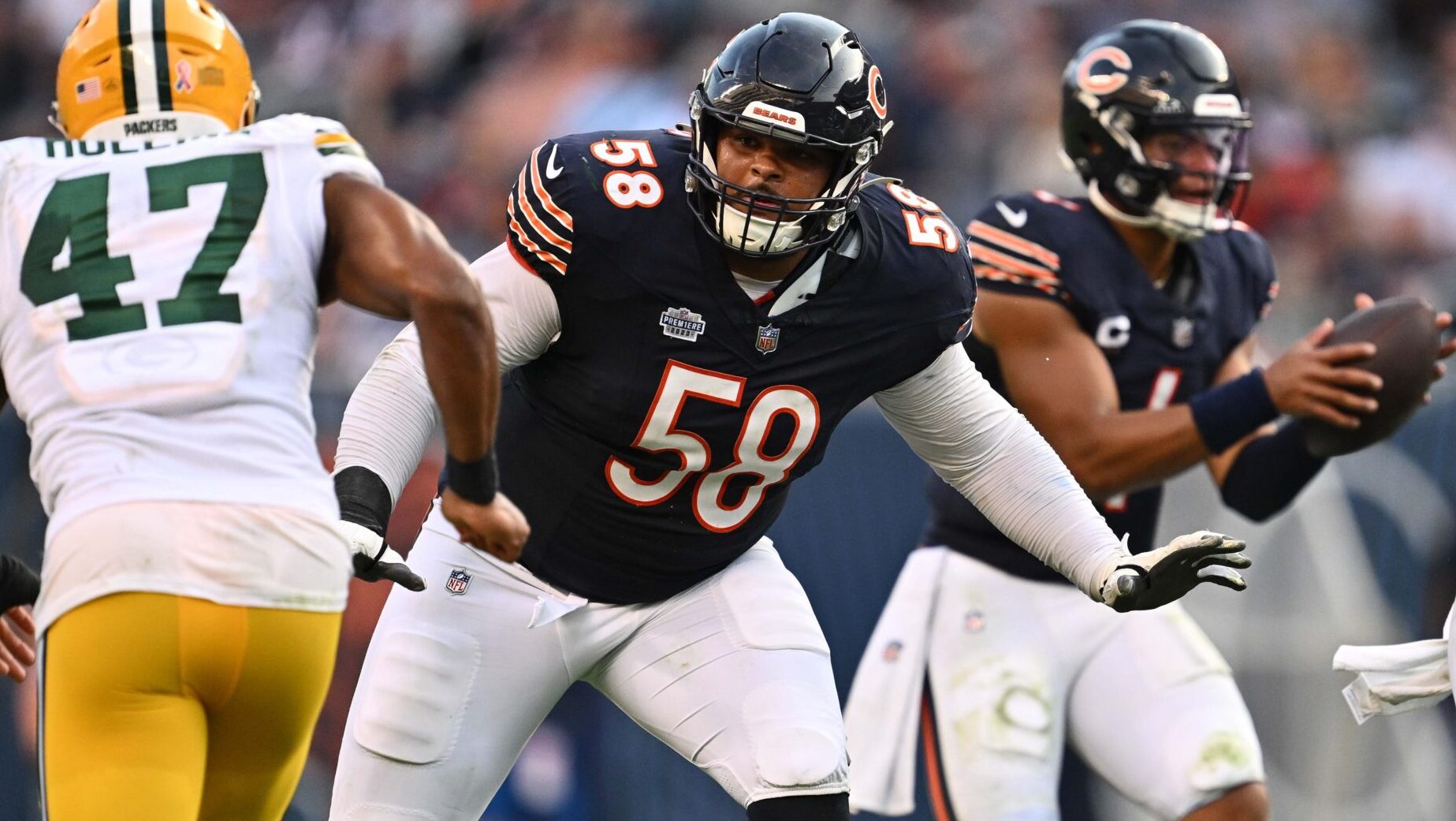Breakdowns
4/8/22
6 min read
Does College Sack Production Matter to NFL Success?

Georgia defensive end Travon Walker has been one of the late risers of the NFL Draft cycle. As tracked by NFL Mock Draft Database, the former five-star prospect was expected to be available in the second round as recently as New Years, but a strong CFP Championship game started an ascension that now may make it to first overall. It’s not difficult to see why. Players who weigh over 270 pounds and run a 4.51 forty-yard dash don’t grow on trees, not to mention a 6.89-second three-cone (the same as Tyler Lockett), 123-inch broad jump (the same as Davante Adams), or his gigantic 35.5-inch arms. From a measurable standpoint, Walker is a bit taller and a bit faster than Myles Garrett.
Past an evaluation of his technical abilities, Walker does have one major drawback as a prospect: he has 9.5 total sacks in his three-year Georgia career. While each of the other top edge prospects this year have at least 14 career sacks, Walker has never so much as recorded multiple sacks in a single game. However, does this really matter? Chandler Jones had only 10 sacks in college, Olivier Vernon added 9 of his own, while Danielle Hunter had 4.5. Together, these three have been some of the most prolific pass rushers of the past decade. Travon Walker could absolutely join this group, but let’s look at how rare this scenario is.
From 2017-2020, there have been exactly 58 edge defenders drafted in rounds 1-3. Using PFF’s charting data, we can compare how productive these players were at the collegiate and professional levels by looking at the percentage of pass rush snaps they recorded a sack. For example, T.J. Watt led the NFL with 22.5 sacks last season on 393 pass rush snaps – good for a sack on 5.73% of pass rush snaps.
Of this group of 58 edge rushers, exactly eight have recorded a higher sack percentage in the NFL. Former Panthers third-rounder Daeshon Hall was the most improved (he has played only 53 pass rush snaps in the NFL), but the only other player to improve their sack percentage by even a single percentage point was T.J. Watt himself. PFF credits Watt with 10 sacks over his Wisconsin career, all coming in 2016, which was a sack on 2.6% of snaps. In the NFL, he has so far recorded a sack on 3.6% of his NFL snaps. The remainder of the players who improved have all done so by minimal amounts – Chad Thomas and Jonathan Greenard by half of a percentage point, Rashan Gary, Taven Bryan, Haason Reddick, and Uchenna Nwosu by less. More realistically, this group of 58 overwhelmingly saw a lower sack percentage in the NFL, on average by a full percentage point. Even the best sack-collectors in Myles Garrett, Trey Hendrickson, and Nick Bosa each fell by about half a percentage point.
It’s fairly clear that we can’t expect pass rushers to notably improve in this regard, at least over their first few years, although a handful may surprise. Travon Walker’s college sack percentage of 1.69% is likely here to stay based on recent historical trends. Although several of the “improvers” mentioned above similarly had college sack rates below 1.75% (including Hall, Nwosu, Bryan, and Thomas), it’s important that this low-production college group barely touched the top 20 of the draft, much less the top five, and they still have struggled to manage even five-sack NFL seasons.
What if we’re thinking about this incorrectly? Some of the insights from PFF’s charting data shows that sack counts are relatively inconsistent from year to year, but pressure rate is more stable and will eventually lead to sacks. If a player can consistently pressure the QB, a low number of sacks could just be unlucky.
Returning to our 58-man group of edge defenders, how does this analysis change when we ignore sacks and instead look at pressure rate? The difference is even more distinct. Only three linemen managed to improve on their college pressure rate. The first, Seattle’s Cody Barton, has played only 11 pass rush snaps in three seasons and therefore doesn’t have a large enough sample to truly draw any conclusions. The other two, DeMarcus Walker and Rashan Gary, increased their pressure rate by 0.6 and 0.4 percentage points respectively. This is not a large amount, with Gary specifically jumping from 15.2% at Michigan to 15.6% in Green Bay. Every other pass rusher declined, including superstars and highly-productive NFL players. Here’s a few:
- T.J. Watt (-3.0 percentage points)
- Myles Garrett (-4.2)
- Haason Reddick (-2.6)
- Trey Hendrickson (-4.5)
- Nick Bosa (-4.2)
- Harold Landry (-4.6)
- Brian Burns (-1.3)
- Bradley Chubb (-2.1)
- Josh Allen (-4.5)
It’s clear that projecting a top edge defender should involve projecting a decrease in pressure rate, in this group by an average of 3.4 percentage points. But at 9.1%, where does Travon Walker have to go? Even a modest decrease by 0.5 percentage points to 8.6% would place Walker as the 92nd-best pass rusher in 2021 – coincidentally behind a 1.5-sack campaign from Chase Young (who recorded 30.5 sacks in college at a 18% pressure rate) and next to Alex Okafor and Al-Quadin Muhammad. Regardless of production in any other area of the game, that’s tough company to keep with a prospective top-ten pick.
Overall, it’s clear that there are edge rushers who have beaten the odds to record vastly more production at the NFL level. Prototypes like Chandler Jones, Rashan Gary, and Ezekiel Ansah have each created radically better results for themselves as pros. However, that’s just what it is – odds. As a freaky athlete, Travon Walker could certainly join those names and become an ascending superstar, but it’s a gamble that is heavily skewed against him. For every Chandler Jones, there’s a Dion Jordan (3.6 college sacks per year) and Dante Fowler (4.8) who struggled to make the expected jump. Talk of a top ten selection may be a step excessive for Walker if a team is hoping to get a dominant pass rusher, but for every spot he falls the value increases – and the right team could find a steal.







